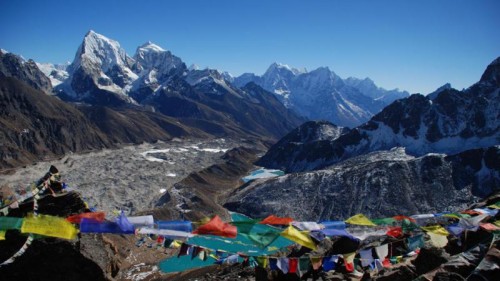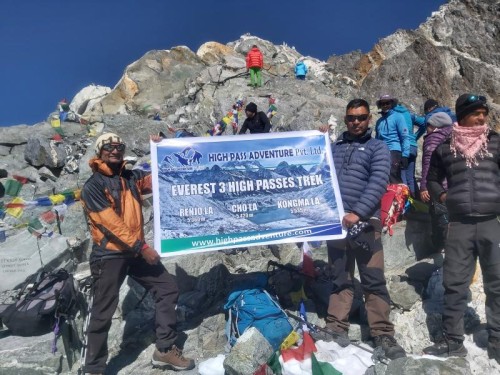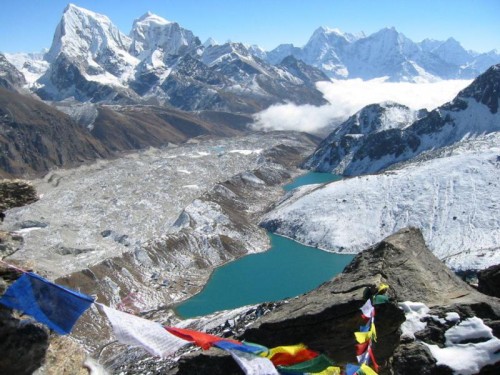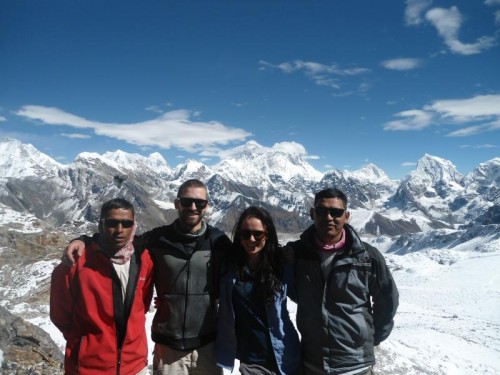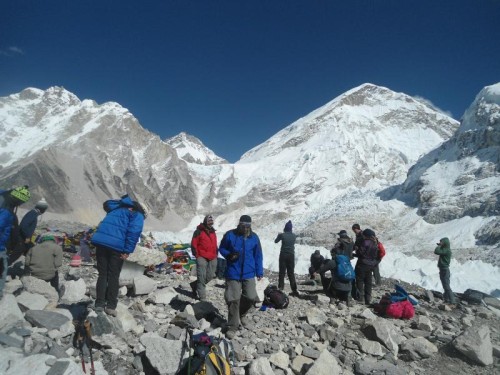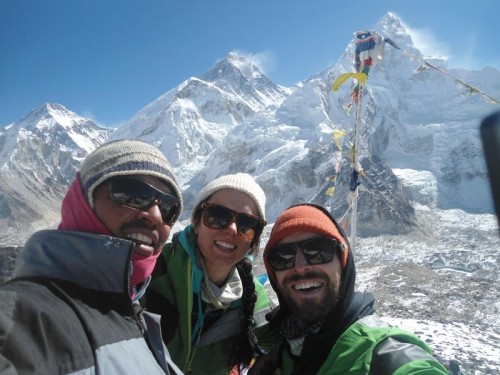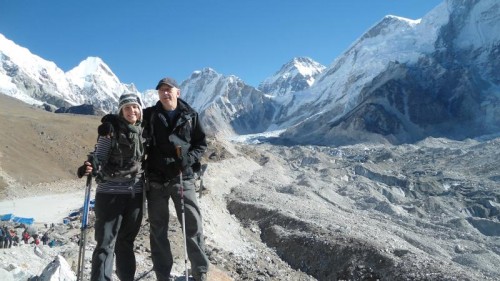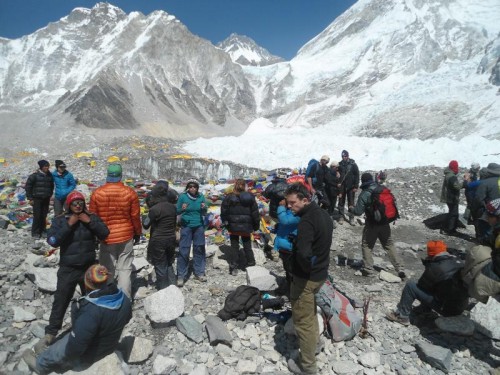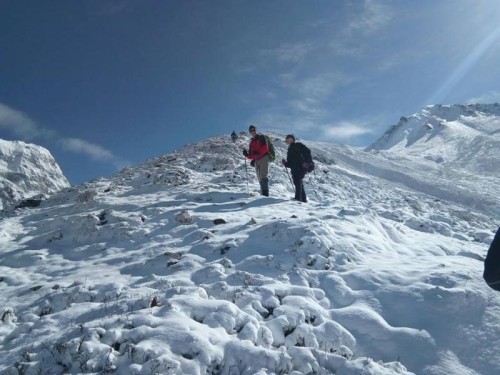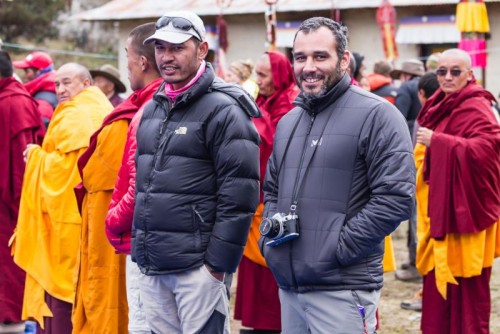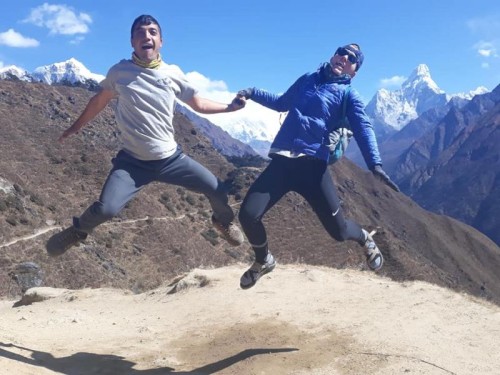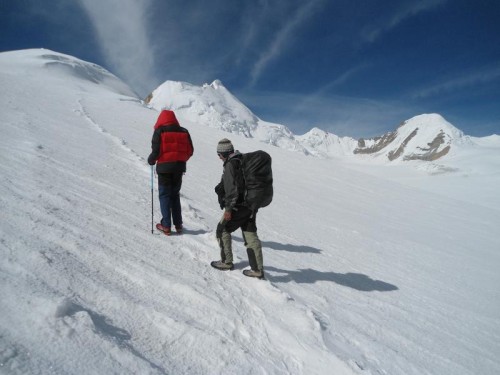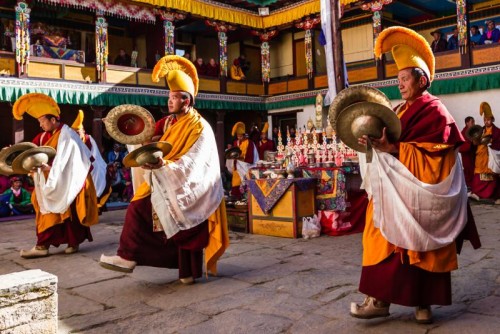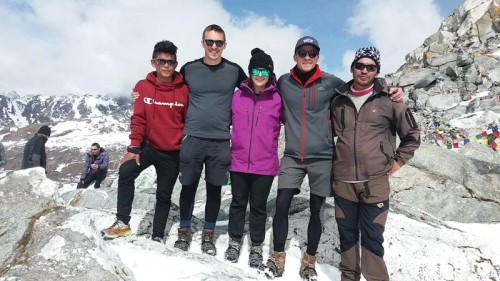EBC Luxury Lodge Trek Difficulty
The difficulty level of the Everest Base Camp Luxury Lodge - 12 days Trek from Kathmandu to Kathmandu is considered challenging and rewarding adventure due to its durations of the trek, remote location, variety of terrain, including steep ascents and descents, rocky paths, and possibly some snow-covered sections, especially around EBC and Kalapathar because it starts at 2,800 meters in Lukla and ascends to higher elevations of 5,364 meters at EBC and over 5,545 meters at Kala Patthar. Weather conditions in the Himalayan area are always changeable, with cold temperatures and the possibility of snowfall, especially at higher altitudes. So this makes the trek physically and mentally challenging.
There is no road access to Lukla, making it difficult to reach, as it is the starting and ending point of the trek. Lukla is situated at an altitude of 2,800 meters above sea level. The trek to Everest Base Camp follows a well-maintained trail, but around the remote location, it becomes rocky and icy, featuring a mix of uphill and downhill terrain at progressively increasing altitudes. Daily walking distances range from 5 to 8 hours in high-altitude terrains, which present another challenge. Good fitness is required, but maintaining good health, physical fitness, and mental preparedness is highly recommended for ascending to high altitudes without experiencing altitude sickness.
The trek to Everest Base Camp Luxury Lodge trek for 12 days in the mountains is definitely not simple due to its walk on high altitude terrains. Some sections of the trail are relatively challenging, with steep slopes and icy on rocky terrain. Some parts of the trail can be prone to landslides and avalanches. Snowfall and rainfall can make the trek more challenging, so it is important to prepare with proper seasonal equipment to handle these conditions.
Having an experienced guide and porter, proper rain and cold weather gear, staying in teahouses, taking rest days for acclimatization, walking slowly, and taking short, easy steps will help minimize the difficulty and make the Everest Base Camp Luxury Lodge Trek more enjoyable and hassle-free.
Acclimatization day to reduce the Altitude Sickness for the Trip
An acclimatization day is necessary to reduce the risk of high-altitude sickness during the 12-day Everest Base Camp Luxury Trek. This trek takes place in a remote, high-altitude area of the Everest Region, starting at 2,800 meters in Lukla and ascends to higher elevations of 5,364 meters at EBC and over 5,545 meters at Kala Patthar. Along the way, trekkers pass through beautiful Sherpa villages, forests, and other high-altitude landscapes with rocky and icy path. As you ascend, oxygen levels and air pressure decrease compared to sea level. Once you reach an altitude above 3,500 meters, you may experience symptoms of altitude sickness, such as nausea, vomiting, diarrhea, headaches, loss of appetite, tiredness, dizziness, and sleeplessness.
Namche Bazaar and Dingboche are designated as our acclimatization rest days in the itinerary for this reduce the altitude sickness on this Everest Base Camp Luxury Trek. These rest day help prevent altitude sickness and allow you to adapt to the environment. If you experience any symptoms of altitude sickness during this journey, it is important to address them immediately to avoid difficulties in completing the trip. To prevent these issues, you should follow your guide's instructions, as they are knowledgeable about high-altitude sickness as well as follow the itinerary closely, as proper acclimatization helps your body adapt to higher elevations. Additionally, stay hydrated by drinking plenty of water, eat a well-balanced diet with sufficient carbohydrates, maintain a comfortable pace, and avoid alcohol and sedatives.
When ascending on the 3,500 meters, be honest with your guide about how you are feeling. Your guide will advise you to walk slowly and may suggest that you sleep at a lower altitude before ascending further. This practice, known as acclimatization, helps reduce the risk of altitude sickness. However, if you continue to feel unwell despite following these recommendations, you should return to a lower altitude.
Requires Permits & Permits Cost for the Trek
The Everest Base Camp Luxury Lodge Trekking route is situated within the Sagarmatha National Park in the Khumbu Pasang Lhamu Rural Municipality in the Everest region of Nepal. Therefore, you need to purchase a Sagarmatha National Park entrance permit and a Khumbu Pasang Lhamu Rural Municipality entrance permit. Another required permit is the TIMS (Trekkers Information Management System) card, which is for your safety and security, as it helps keep track of trekkers' whereabouts in the region. All permits are mandatory for the Everest Base Camp Luxury Trek.
These permits can be obtained through a reputable trekking company from the Tourism Board in Bhrikuti Mandap, Kathmandu. The Sagarmatha National Park entrance permit can be buy in Monjo and Khumbu Pasang Lhamu Rural Municipality entrance permit can be purchased in Lukla after starting the journey. You or your guide must carry these permits throughout the trek, as you will need to show them and register at every checkpoint along the trail. If you attempt to trek without these permits, you will need to purchase them on-site at double the cost (as a penalty) or you may be forced to turn back. Requiring permits are given below:-
Khumbu Pasang Lhamu Rural Municipality entrance permits
- Cost: US$ 30 per person, per trek for all foreigners
- Cost: US$ 20 per person for SAARC (South Asian Association for Regional Cooperation) citizens
TIMS (Trekkers Information Management System) Card:
- Cost: US$ 20 per person, per trek
Sagarmatha National Park Entrance Fees:
- Cost: US$ 30 per person, per trek for all foreigners
- Cost: US$ 15 per person for SAARC (South Asian Association for Regional Cooperation) citizens
Luggage Load Carried by Porters during the Trek
If you are doing Everest Base Camp Luxury Lodge Trek with just a guide, it will be a cheaper journey, but the guide will not carry your luggage because they are professionals and have their own luggage to carry. In this case, you can hire a porter-cum-guide who handles both guiding and carrying your luggage, typically about 10 to 12 kg.
If you are in a group, we usually assign one porter for every two trekkers, so each trekker's luggage should weigh around 10 kg. If you hire a Porter, a porter typically carries 20 to 25 kg during the trek in Nepal. Trekking with both a guide and a porter highly recommended because they makes walking easier and gives you more free time to enjoy the trekking and climbing, resulting in a memorable trekking experience in Nepal during the Everest Base Camp Luxury Lodge Trek.
Best time for EBC Luxury Lodge Trek
The best time for the Everest Base Camp Luxury Lodge Trek is during the pre-monsoon (spring) and post-monsoon (autumn) seasons. These periods offer the most favorable weather conditions and clear views of the mountains.
Spring is a popular time to trek to Everest Base Camp on a Luxury Lodge Trek. The weather is mild, and the rhododendrons are in full bloom, adding vibrant colors to the trails. The temperatures are warmer, the days are longer, and clear skies make for a wonderful and memorable trekking experience. However, it can be crowded along the route with other trekkers.
-
Autumn (Late Sep to early Dec)
Autumn is another excellent time to trek to Everest Base Camp on a Luxury Lodge Trek. The season starts after the monsoon, so the rains have cleared the air, offering stunning views of the mountains. The weather is stable, providing great visibility for breathtaking mountain views. Additionally, this time coincides with various Nepalese festivals, allowing you to observe the local nature and culture. However, this is also a peak trekking season, so trails and lodges can be busy during this time.
-
Winter (December to February):
The winter season is not recommended for the Everest Base Camp Luxury Trek due to colder temperatures and occasional snowfall, especially at higher elevations. While daytime temperatures at lower altitudes can still be comfortable, nights are much colder. However, some trekkers choose to trek in winter, resulting in fewer people on the trails and offering a quieter and more serene experience. Luxury lodges are less crowded, providing a more intimate atmosphere. Despite the snowfall at higher altitudes, winter days often bring clear skies, offering stunning views of the snow-capped peaks. Nevertheless, winter trekking requires proper gear and preparation, as snow and ice on the trails can make hiking more challenging.
Summer is not a good time for the Everest Base Camp Trek, as it is the off-peak season for trekking in the Everest region. During summer, you'll encounter fewer tourists on the trails and in the lodges. However, summer brings warmer temperatures and monsoon rains to the region. Days can be hot and humid, especially at lower elevations, while higher altitudes may still experience cooler temperatures. If you decide to trek in summer, be prepared for challenges due to rain, which can make the trails muddy and slippery. There is also a risk of leeches at lower elevations. Views of the mountains may be obscured by clouds and mist.
Therefore, the best time for Everest Base Camp Luxury Lodge trekking in the Everest region depends on your vacation time and requirements.
Name of Luxury Lodge along the EBC Trek
Luxury lodges along the Everest Base Camp (EBC) trek are given below; these lodges offer various amenities, including comfortable beds, hot showers, good food, and excellent service, ensuring a more pleasant trekking experience. Offer enhanced comfort and facilities compared to standard teahouses.
Here are some famous ones:
Lukla
- Yeti Mountain Home and Everest Lodge at Lukla: Comfortable rooms with en-suite bathrooms, excellent food, warm dining hall and good service.
Phakding
- Yeti Mountain Home Phakding: Cozy rooms with attached bathrooms, beautiful garden, and warm hospitality.
Namche Bazaar
- Yeti Mountain Home Namche: High standard of accommodation with fantastic views of the mountains, comfortable rooms, and good facilities.
Deboche
Rivendell Lodge and Sherpa culture home: A popular choice for its serene location and comfortable rooms.
Dingboche
- Good Luck Lodge and summit Everest: Offers comfortable rooms and stunning views of the surrounding peaks.
Periche
- Edilways and Himalayan Lodge: Known for its comfort and good services in a high-altitude setting.
Lobuche and Gorakshep:
- There are not luxuries lodge but we provide one of the best teahouse but comfortable accommodation options and good food.
Reach to Lukla by Airplane
Lukla is the small town that serves as the starting point for the EBC trek with a helicopter return. It has a small airstrip where many planes land from Kathmandu and Ramechhap during the busy trekking season. The airstrip is named Tenzing-Hillary Airport, Lukla. Regular flights to Lukla are operated by Tara Air, Summit Air, and Sita Air from both Kathmandu and Ramechhap. There is no road connection from Kathmandu to Lukla, so trekkers must either fly there or trek from Phaplu or Jiri.
Regarding luggage weight: there is a luggage weight limit on small planes. You need to ensure that your total luggage weight, including your hand-carry bag, does not exceed 15 kg; otherwise, you will have to pay extra. We suggest keeping your luggage weight under 15 kg. Sometimes, if the plane is overloaded, you may have to fly without your baggage, which will arrive on the next flight.
Please be aware that taking a smaller aircraft for the flight to Lukla involves navigating the narrow Himalayan area, crossing many high hills. Occasionally, bad and critical weather might delay your journey to and from Kathmandu-Lukla-Kathmandu or Ramechhap-Lukla-Ramechhap. The weather in the Himalayan and hilly regions can change very quickly, causing flight delays. This can extend your journey, so you should plan for a few extra days before and after the trekking days in your itinerary. However, we will try to create the best possible itinerary, considering potential flight delays and cancellations.
If you do not have extra time before and after the trekking itinerary, you may need to take a helicopter to fly near Lukla, but good visibility is required for helicopter flights. Alternatively, you could shift the trekking route to another region. We have extensive experience with such situations and always strive to provide the best service for trekkers who book the EBC trek with a helicopter return with us.
Internet & Mobile Network service in the EBC Luxury Lodge Trek.
Internet and mobile network services are available along the Everest Base Camp Luxury lodge Trek trip but that can be unreliable and expensive as you ascend. During this trip having access to internet and mobile network services can enhance your experience by keeping you connected with family, friends, and emergency services.
Most of the Luxury Lodge along the EBC trek offer Wi-Fi service for free. The quality of the Wi-Fi connection is generally better at lower altitudes like Namche Bazaar. As you ascend, the connection might become slower and less reliable. Some other teahouse, the cost of Wi-Fi ranges from NPR 500 to 100 for a whole night, depending on the location.
Regarding mobile network service, the main providers in Nepal are Ncell and Nepal Telecom (NTC). Both have network coverage along the EBC Luxury Lodge trek, but coverage can be spotty at higher altitudes. The mobile network is primarily for voice calls and not for 4G data. If you do not have internet service in an emergency, our guide will help you pass messages as our guide always carries a cellular phone and stays in contact with our Kathmandu trekking office to update them about the trek and your health condition.
Traveling is an important part of life, so we ensure your safety and health during trekking in Nepal. Nowadays, you can get a local SIM card at Kathmandu airport upon arrival to use 3G and 4G internet services, as most trekking routes in Nepal have mobile network service.
Travel insurance and insurance policy for Trip
Travel insurance is important for the Everest Base Camp (EBC) Luxury Lodge trek, as it covers a wide range of potential risks including high-altitude sickness, flight cancellations, medical emergencies, and evacuation costs. This is necessary because the journey involves high-altitude terrains, and the Himalayan climate changing very quickly, increasing the risk of high-altitude sickness.
The EBC Luxury Lodge trek is located between 2,800 to 5,545 meters, purchase travel insurance is essential. If an accident occurs during the trip and requires medical attention or evacuation, the cost of returning to a city and receiving treatment may be significant. Therefore, you must ensure that your insurance covers the cost of an air ambulance, medical care, and any travel-related risks such as delayed flights and lost stolen, damaged, or missing baggage. Your insurance policy should cover your complete itinerary while visiting Nepal, including hikes higher till 5,500 meters. If not, you will be responsible for all unforeseen costs associated with your trek in Nepal.
All trekkers must send a copy of their comprehensive travel insurance policy certificate to High Pass Adventure as part of the booking process for trekking and climbing in Nepal. This ensures that all necessary coverage is in place for a safe and secure journey.
Tipping information
The trekking and climbing guide, as well as the porter, is essential to the success of the trip, ensuring that it is completed smoothly and without issues. Tipping is an important aspect of trekking in Nepal, as it acknowledges and appreciates the hard work of the local staff who assist you throughout your journey. It is customary to tip at the end of the trek, and you should gather all team members (guide, porter, assistant guide) together to distribute the tip. Tips are generally given in cash, preferably in US dollars or Nepalese rupees, and it is best to use small denominations to facilitate easier distribution
While the typical guideline is to tip around 10% of the total payable amount, you can adjust this based on the quality of service provided. Recommended tipping amounts are as follows:
- Guide: $12-$15 per day
- Climbing Guide: US$ 80 total
- Porter: $8-$10 per day
- Assistant Guide: $8-$12 per day
These tips are highly recommended to motivate the team and reward them for their outstanding service, contributing to a memorable and inspiring experience.
Required packing list for EBC Luxury Trek
Travel equipment is essential to pack before your trip. Below is the recommended packing list. We understand it may seem like a lot to carry from home, so we suggest packing light and bringing only the necessary items. If you’re missing something, you can hire or buy it in Kathmandu, especially around Thamel.
These general items are suitable for all seasons while trekking in Nepal, but the list may vary depending on the season and the duration of your chosen trek. It is highly recommended to choose lightweight and multi-functional gear and to minimize unnecessary items. This approach will help reduce the weight of your pack and make your trekking experience more comfortable. Therefore, it’s important to ask your trekking organizer for a detailed packing list specific to your trek. They will provide you with clear information about what to bring.
Documents:
- Passport and 4 passport size photos
- Travel insurance details (in case an emergency evacuation if needed)
- Boarding passes for flights
- Driver’s license (if needed)
- Cash USD
- Credit/Debit Card (Ensure you have $500 on your card in case an emergency helicopter evacuation is needed)
Sleeping
- Sleeping bag (Comfort rating -15 Celsius recommended)
- Sleeping bag liner (Optional)
Footwear
- Trekking boots: one pair lightweight
- Sandals for city and tea house footwear
- Shoes for the plane and tea houses (Optional)
- Gaiters for hiking in winter to the base camp
- Thin, lightweight inner socks
- Thick, warm wool hiking socks
Clothing for Body
(Please make sure that you have non-cotton clothing for trekking)
- Base-layer t-shirts (e.g. running t-shirts)
- Fleece/Windproof jacket
- Waterproof jacket
- Down jacket for warmth
- Travel clothes and City Wear
- Underwear
- Base-layer trousers (optional)
- Waterproof trousers
- Trekking trousers
- Trekking shorts (Optional)
- Gloves and wool hat
- Bandanna or scarf
Health Requirements (Basic First Aid Kit)
- First-aid kit; should contain lip salve, Aspirin, Band Aids, anti-histamine, Imodium or similar tablets for mild cases of diarrhea
- Re-hydration powder, extra prescription drugs you may be taking if any particular
- Wet wipes for cleaning can be purchased in Kathmandu
Others
- Sunglasses and Sun cream
- Towel
- Book (reading and writing materials)
- MP-3 /Music, headphones and ear plug (who know some people on group are snoring) as optional.
- Travel wash
- Hand sanitizer, wet wipes
- A day bag: 35 liters
- A duffel or rucksack with straps to go over your back (Max 12 kg of weight for porters to carry)
- Dry Liner or Dry Bag
- Water bottle/thermos/ camel bag: At least 2 L. Nalgen bottles best.
General Toiletries
- Toilet papers/ tissue
- Contact lenses, Glasses (if needed)
- 1 medium sized quick drying towel
- Tooth brush/paste (preferably biodegradable)
- Multipurpose soaps (preferably biodegradable)
- Nail clippers
- Face and body moisturizer
- Feminine hygiene products
- Small mirror
- On Personal Hygiene
- Wet wipes (baby wipes)
- Anti-bacterial hand wash
Others (optional)
- Trekking Poles
- Large plastic bags – for keeping items dry inside your kit / duffel bag
- Travel game i.e. chess, backgammon, and scrabble. (for luxuries)
- Binoculars (for luxuries)
- Trail Map/Guide book (if you are alone)


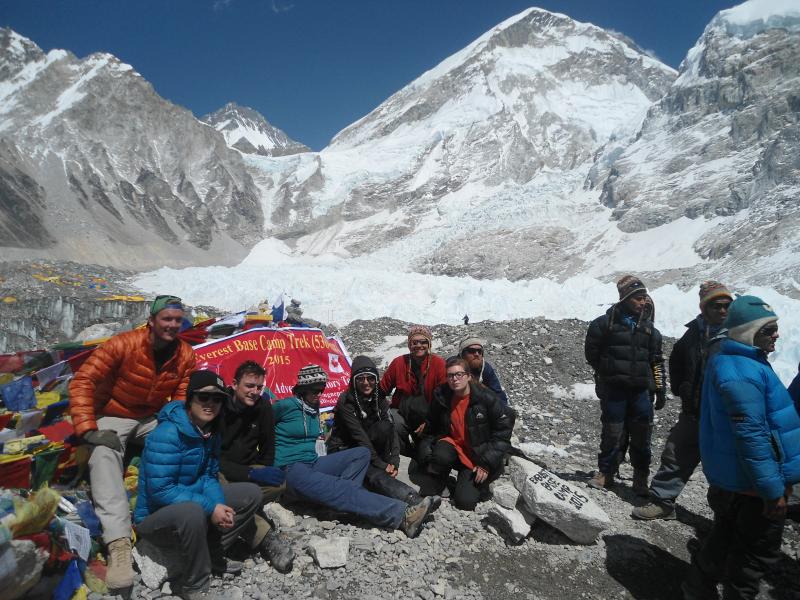
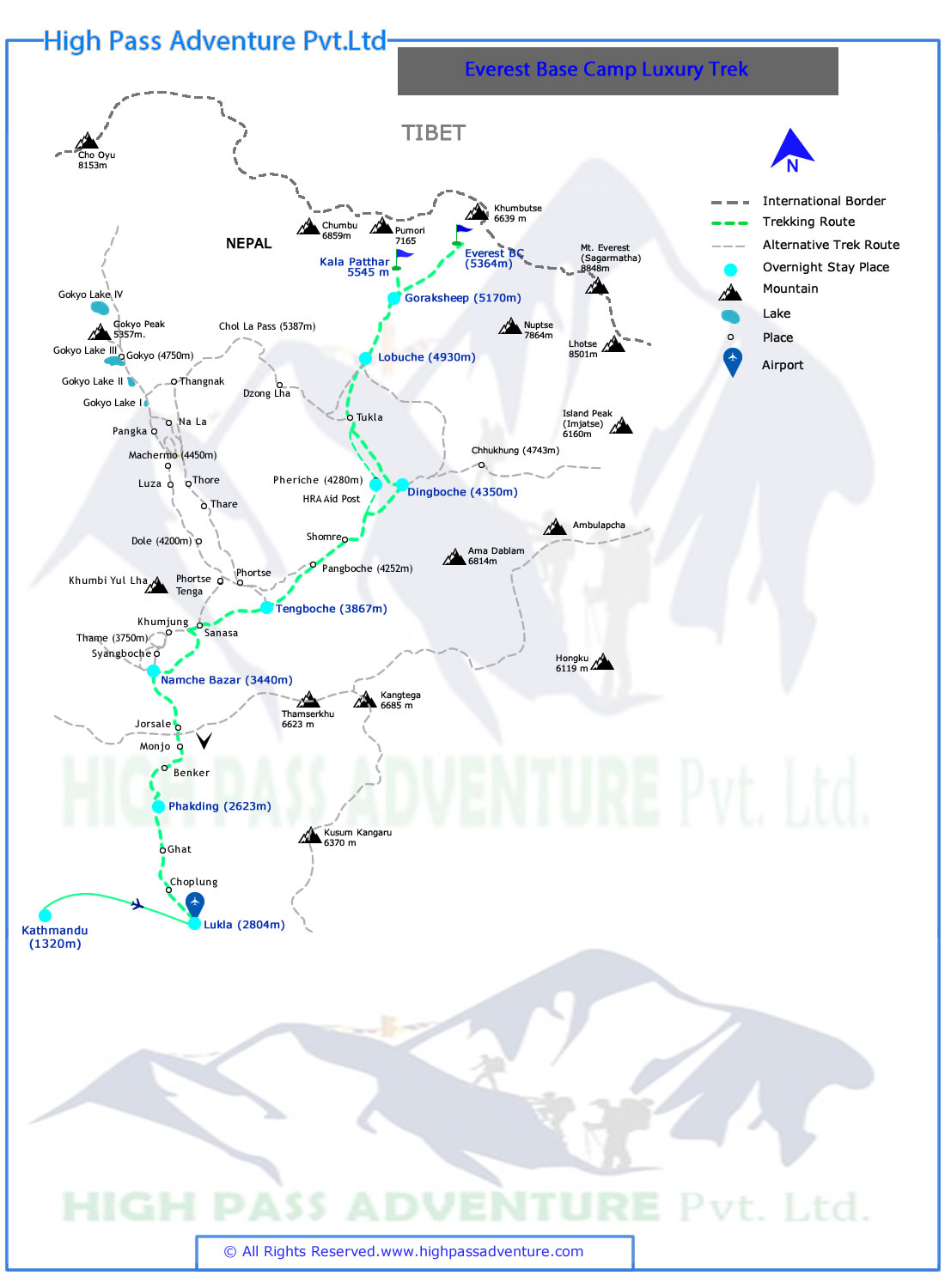



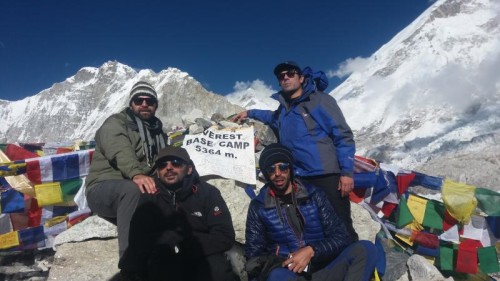
 USD 1340
USD 1340